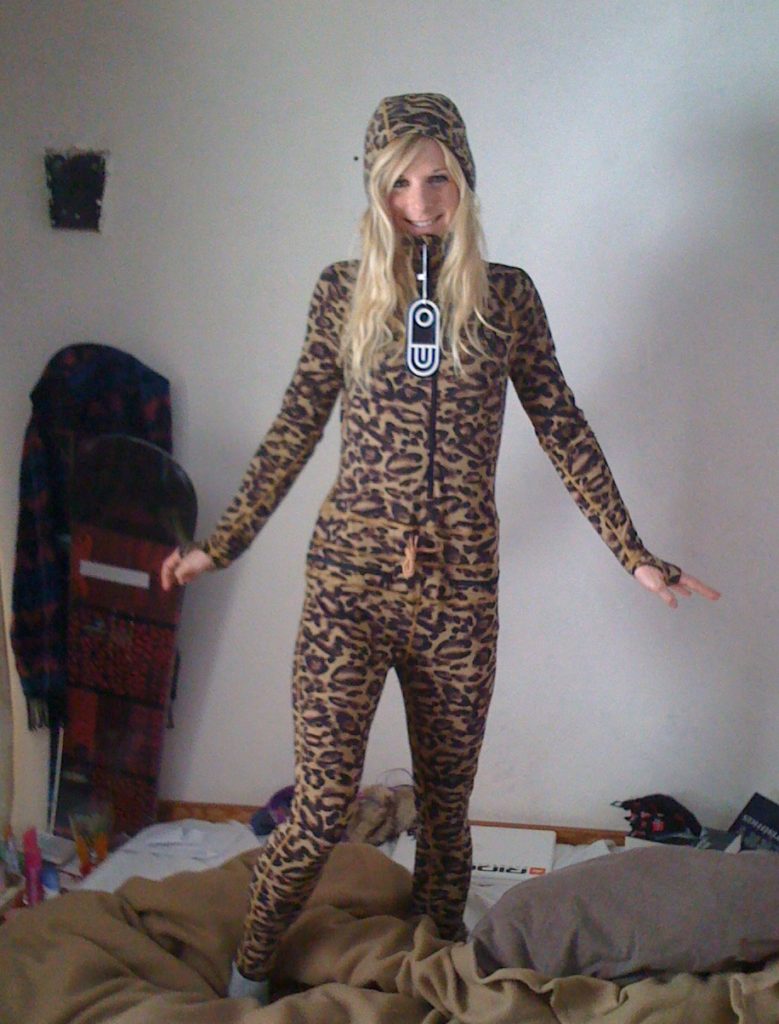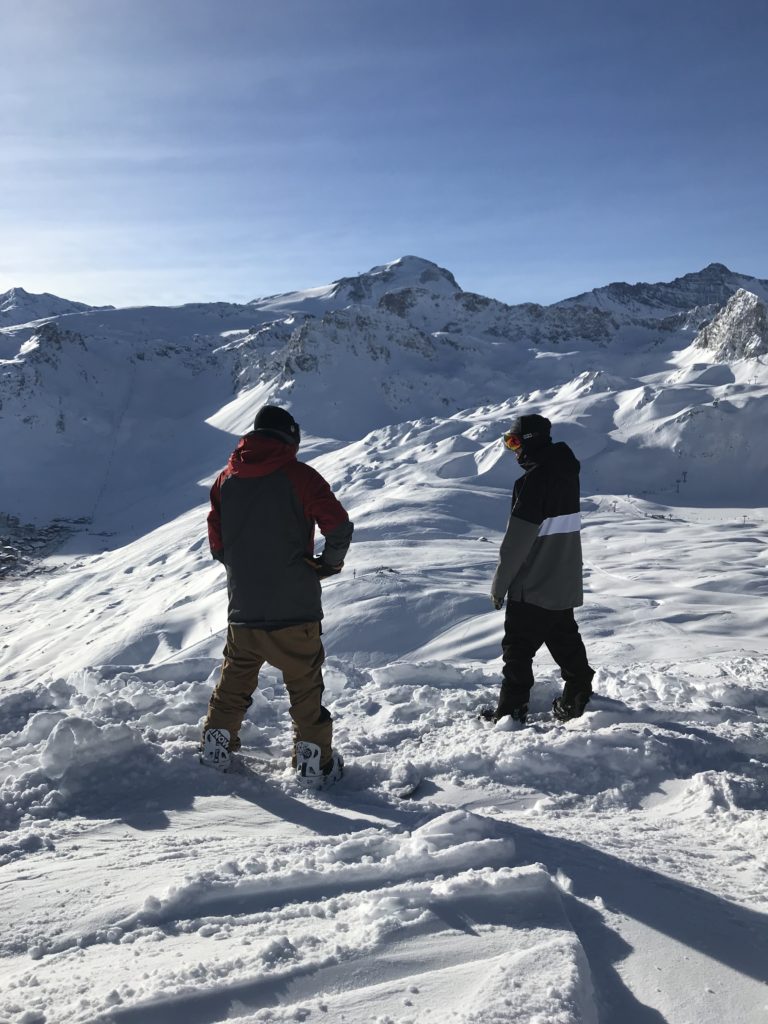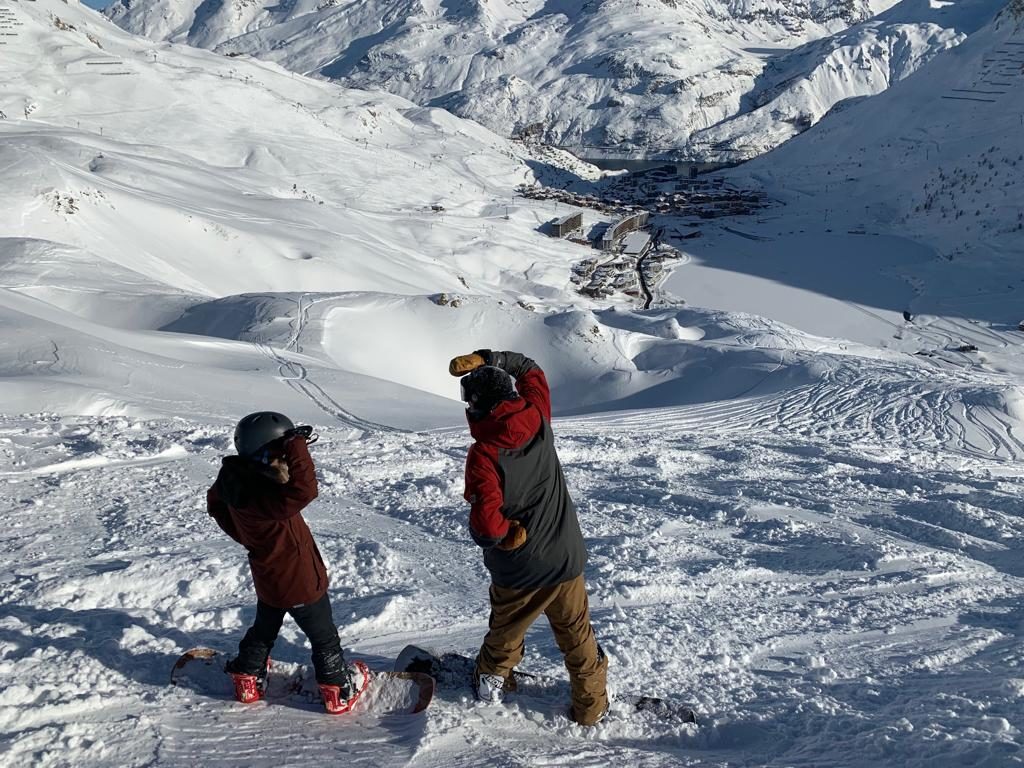The moment I fell in love with snowboarding was the first time I rode powder. That feeling of floating on clouds and that sound of your snowboard cutting through the untouched snow. I was sold.
Although I have continued to dabble in powder riding over the years, and been lucky enough to find some amazing powder spots, I haven’t done heaps and I definitely wouldn’t consider myself “experienced” in the area. In fact, I’m embarrassed to even admit it, I would be the one that you would normally find in the park on a powder day, please don’t hate me.
In more recent years I have found myself becoming more enticed into the fluffy stuff once again, possibly because I’m getting older and everyone else in the park is getting younger! I’m not going to give you advice on HARD CORE powder riding as I am by no means qualified, but I am going to give you tips for novice powder riders like myself. Like any aspect of snowboarding, it’s dangerous. But if you stay safe and get that fresh line that everyone dreams about, I can guarantee it will make you fall in love with snowboarding 10 times over.

Off-Piste Equipment
One of the most important things is to have the right avalanche rescue equipment. More importantly, know how to use it. Also, go with others that know how to use THEIR equipment as they will be the ones rescuing you, if it comes to that. At a bare minimum you should have a transceiver, shovel and probe. You should NEVER step into the back country without them. There are plenty of courses you can go to learn how to use these if you are unsure. Other items you could consider getting too are an AirBag (inflates in you are caught in a slide to keep you afloat on the snow) and a backpack specially designed to carry it all. Yes, its expensive but you really can’t put a price on your life. For me it’s like a helmet, you shouldn’t pick and choose when you use it. You’ll jinx yourself. Even if you’re clued up in the back country, mother nature can throw curve balls.
Take a look at a selection of recommended kit here.
Technical Gear
First of all, consider your snowboard. Is it going to be suitable off-piste? I would say you can “get away with” most boards riding powder, but it won’t be a pleasurable experience. Taking your 138 jib board into waist deep powder will be hard work. Longer boards are definitely better as they float on top more. You can get some pretty funky back country specific boards that look more like rockets with pointy noses. I would recommend a set-back stance to give you a longer nose and shorter tail. A directional snowboard therefore will be better, but it is possible to change your stance on a twin (that’s what I do!). Double check the wax on the base of your snowboard. There are waxes for different temperatures/ conditions. It would be good to have a wax for “cold/ wintery” rather than a “spring/ slushy” wax. Or you can have one that does it all. It doesn’t matter about turning your edges too much, phew.
Clothing wise, I always end up over dressing for a powder day. Powder riding is really hard work, a lot more physically demanding than normal piste bashing. So, think about layers (not too many) and things that are easy to take off. It’s inevitable at some point you will get stuck in neck deep powder and have to wade/ dig/ sweat your way out! Fabrics too can help, breathable ones that take moisture out but keep the essential heat in. Something to stop the snow getting down your pants is helpful too. A snow skirt (fastened onto your pants from your jacket to create a closure) or a Ninja Suit (a snow version of a Onesie). Don’t forget the gators over your boots and gloves. Nothing worse that cold soggy hands and feet.

Your Technique
With any type of sport, start with the basics and work your way up i.e. don’t go Heli-Skiing your first time riding off-piste. I would start with powder pockets on the piste, try and find them and ride through them just to get used to how it feels. Then start to dip in and out of the powder at side of the piste. The next stage is to do maybe short off-piste runs that are easy to access from a ski lift. Then some short tree runs? Once you’ve mastered these, venture further afield with some small hikes to access more back country. Then bigger hikes. Then befriend someone with a skidoo to access even more terrain. This is as far as I have got. I feel the next goals would be split boarding/ touring, hardcore hikes, heli skiing etc. Watch out 2019!
Riding powder is a totally different technique to just cruising around. Make sure you put lots of weight on your back foot to keep the nose of your board up, a bit more like surfing. Almost like you are doing a tail press down the whole mountain. You don’t have to carve your turns and be as precise. Use less edge, more flat base and don’t be as aggressive. Shorter turns are better rather that cutting across the whole face from side to side. Also, better for preventing avalanches. Speed is your friend. The faster the better, don’t be scared and just go for it! Faster is also safer. Finally, “slashing”. You can kick up massive face shots of snow by really pushing your back foot out at the end of the turn. Good party trick.

The Mountain
It’s important to know the mountain before you venture off-piste. You don’t want to get lost and end up have to trek through snow for hours and miss afternoon tea. If you are new to the resort, a good map and speaking to some locals is a good idea. Sussing out routes whilst you are going up in the chair lift can be good, remembering land marks etc. I always try and keep a ski lift in sight when I’m off-piste, so I at least know that I’ve got a way back up if all else fails.
Check the weather and the snow conditions before you go out. The resort will issue an “avalanche” risk. If it’s high, stick to the piste, it’s just not worth it. Learn to recognise when the snow could be sketchy. Is it really wet and heavy? Can you see bits that have slid already? Are there any other tracks down it? If you know a resort well you will know the dodgy areas prone to slides. If you’re a newbie, make sure you are clued up on no-go areas. If the visibility is bad, head to the trees. They add definition and are less susceptible to avalanche. Look before you leap. Powder can be deceiving, it may look all white and fluffy but you never know what could be lurking underneath. Take it slow and cautiously on areas you are sure about.

The Crew
Just as important as the equipment you use, is the crew you ride with. You need to ride with people that you trust, that know you and know your abilities. In an unfortunate case that you are caught in an avalanche, they will be your rescuers. As mentioned before, make sure you ALL know how to use your mountain rescue equipment. Ideally you should go off-piste with people of similar standard to you. You don’t want to put in a situation where you are totally out of your depth but the only way is down.
There’s something about riding powder together that really bonds you. It’s like you’ve experienced a little slice of heaven that no one else has. Shared a secret. Important to choose a crew that you want to experience that with.

Rules
More like off-piste etiquette I guess…
Always wait for last person and keep them in sight.
Leave a reasonable gap between each person.
Know the different signals for “OK” and “NOT OK” etc.
Don’t snake. If another crew have sussed out a line first, don’t steal it from them.
Take it in turn to “boot pack” if doing a hike.
High fives and fist pumps. Use them
Word on the street is there is A LOT of snow in Europe right now. If it’s another season like last years epic snow season, you are sure to score some powder. Stay safe and take a snorkel!
We still have some availability in Chalets and our Mountain Lodge for this winter so get in touch at [email protected]